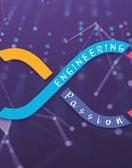Humans have long been fascinated by how far machines can take us. In 1950, Alan Turing posed a question in his paper “Computing Machinery and Intelligence.” He asked if machines could think. If a computer could imitate human behavior, would this mean that the computer itself is capable of sentience? From that question stemmed the Turing test — the test that set the fundamental goal and vision of artificial intelligence.
This lay the foundation of Artificial Intelligence as we now know it. Artificial intelligence brings to mind robots capable of human behavior popularized by Hollywood through movies like The Bicentennial Man or Terminator. In reality, artificial intelligence has a broader sphere than just making machines that will simply imitate humans, at least not in the way that the movies will have us believe.
Artificial Intelligence
Artificial intelligence (AI) is a branch of computer science that aims to create machines capable of performing tasks that require human intelligence. AI wants to see if the answer to Alan Turing’s question is a resounding yes.
We use AI in our daily lives, though we may not always be aware of it. Asking Siri or Alexa to look something up for us, or chatting with chatbots to address our inquiries, searching things on Google, and even something as simple as the pesky ads we get bombarded by online are all thanks to artificial intelligence. Even using knowledge bases like Slab, Asana, or Dropbox still requires the use of artificial intelligence to make results more accurate for its target audience.
Machine Learning – How artificial intelligence works
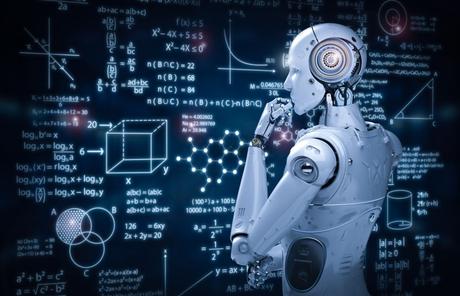
Artificial intelligence works by trying to mimic human intelligence through machine learning. Machine learning is, simply put, giving systems or machines the ability to learn through large amounts of data and trial and error in order to give them a human-like capability to “think.” Today, machine learning is helping systems in things like cancer research and climate change.
Computer programs generally rely on lines upon lines of code to perform tasks or retain information. The information retained by these programs is considered explicit knowledge — things written in books or stored in videos and presentations. This is the kind of knowledge that is easily transferable through reading and watching instructional videos. What machine learning does is allow computers to process tacit knowledge. Tacit knowledge is knowledge that is based on human experience and is hard to transfer verbally or through diagrams and manuals. Things like learning to ride a bike or how to swim are prime examples of tacit knowledge. You cannot teach a person how to balance on a bike or stay afloat by giving them a written manual on how to do it.
Teaching machines to learn tacit knowledge is accomplished by feeding the system data and then using statistical techniques to help the system learn to get better at certain tasks. All without having to input millions of lines of written code. The machine itself will “learn” through numerous trials and errors, getting exponentially better after performing every task.
Popular Machine Learning Methods
Supervised Learning
In supervised learning, input and desired outcome are entered to create labeled examples. If the actual outcome does not match what the machine knows should be the correct outcome, it will automatically spot an error. A real-life application of this is the algorithm to detect credit card fraud. The algorithm predicts normal transactions based on previous data. If an anomaly occurs that is unexpected based on previous transactions, this triggers an alert for credit card fraud, which, in turn, will warn your bank, who will alert you that your credit card may have been used by someone else for fraudulent reasons.
Unsupervised Learning
Unlike supervised learning, unsupervised learning does not have a “correct” outcome. This type of learning focuses on allowing the algorithm to extrapolate its own conclusions based on the given data. The algorithm clusters data into groups based on commonalities. In the real world, this is used for data mining and targeted marketing campaigns like the ads you keep seeing on your socials.
Semi-supervised Learning
This type of learning falls between supervised and unsupervised learning. In semi-supervised learning, the system is fed both labeled and unlabeled data and leaves the system to group all the information based on the labeled data it is fed. This is seen as a promising algorithm because it takes a lot of time and costs a lot to hire experts to cluster and label supervised data. With this algorithm, it will shave off not only hours but money spent as well.
Reinforcement Learning
Reinforcement learning involves a lot of trial and error. This method allows the algorithm (called an agent) to learn from its environment. It forces the agent to extrapolate data from its environment to maximize rewards and minimize risks. It requires giving rewards or reinforcement signals for the agent to learn its behavior. It goes through these steps:
- The agent observes the input state
- The agent uses its decision-making function to perform an action
- If the action is favorable, the agent receives a reward or reinforcement signal
- The information about the action that resulted in the reward is then stored
Reinforcement learning’s real-world applications include games like Chess and robotics.
Deep Learning
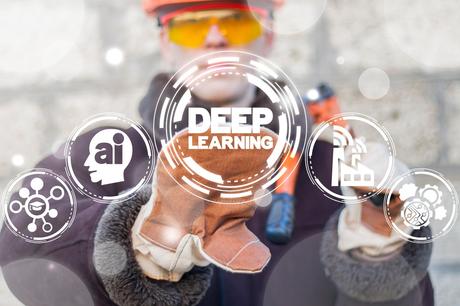
Deep learning is a subset of machine learning concerned with algorithms that mimic the structure and function of the human brain. The algorithm processes data and creates patterns that help in decision-making much like the human brain would. This uses a hierarchical level of artificial neural networks. These artificial neural networks function like a human brain and allow a nonlinear approach to data processing.
Some real-world applications of AI
Healthcare

Thanks to deep learning, systems can now accurately group and interpret data accurately and with a lot less time and cost involved. With the global crisis that COVID-19 presented, artificial intelligence was able to lighten the load for clinicians and other healthcare providers. Based on a recently published study, deep learning was able to suss out COVID-19 from a community that had acquired pneumonia or other lung diseases.
Apart from helping with large amounts of data, artificial intelligence also greatly helps in robotically-assisted surgery. This mostly applies to minimally invasive surgeries and bypasses the normal human limitations of surgeons. Not to mention how AI algorithms help in diagnostics, billing, and even delivering the correct dosage of medicines to the right patients.
With the pandemic looming over our heads, heading out to your doctor’s office for minor complaints seems more dangerous than just staying home and dealing with whatever minor thing ails us. However, since we are living in the age of artificial intelligence, hospitals and clinics now have chatbots that take down your symptoms and match them with a possible diagnosis. This takes a lot of pressure off the already overworked healthcare workers and frees them up to address more pressing matters.
Space Exploration
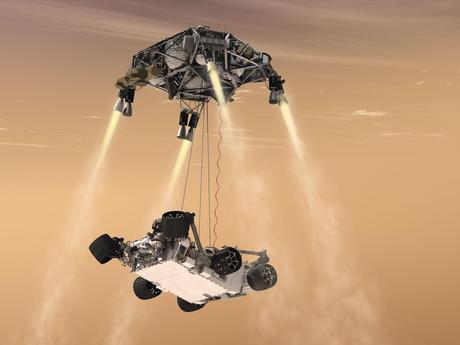
Artificial intelligence is helpful to the human venture of space exploration. Astronomers use artificial intelligence to work through years of data to identify planets and planetary systems. AI is also helping astronomers in spacecraft monitoring. Scientists and engineers are also working on an algorithm that will predict their needs, including psychological needs, and address them appropriately. This will ensure that our astronauts get the optimal support they need while they break the frontiers of space.
Social Media and Online Marketing

Chances are everyone you know will have a profile on at least one social media site. Social media apps like Facebook, Twitter, Snapchat, and Instagram use artificial intelligence to provide targeted content to their audiences. Haven’t you wondered why Facebook suddenly knows that you have been coveting those hard-to-find, collectible sneakers? Or why you get shown ads of things that you were thinking about buying? The AI algorithms that these social media sites use gather information from sites you visit, to the searches you run to provide you with content that the system thinks is relevant to you.
AI in Engineering
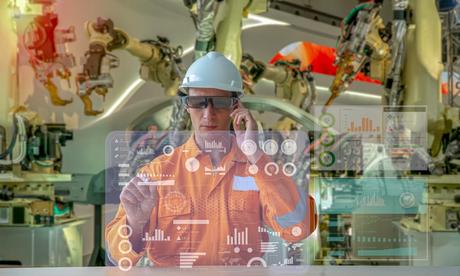
Engineering has such a broad scope, as broad a scope as artificial intelligence itself. Engineering has its fingers in spheres from computer science to robotics.
Artificial intelligence in engineering involves both software and hardware. Over time, machines will learn to not only support and do simple and complex manufacturing tasks, they will also learn how to design or improve tasks without human intervention.
If you think about it, tools like Computer-Aided Design (CAD) were once just a supplemental tool for engineering. Now it’s a fundamental part of it. AI can also provide automation for some tasks, allowing engineers to concentrate on more difficult tasks.
In the field of robotics, artificial intelligence has allowed car manufacturers to use AI systems in their manufacturing lines. Robots can now complete tasks from simple engineering activities to more intricate steps and precision movements in the process.
Engineers in AI
Perhaps the biggest concern of engineers when it comes to artificial intelligence is the possible loss of their livelihood. The worry that machines will soon take over their jobs is ever present. Automation has taken over some jobs as machines can do simple tasks quicker and more efficiently and accurately than their human counterparts. However, another way of looking at the job loss is that it frees up time and resources for higher-level tasks, and involving machines in engineering can open up the possibility of having new job opportunities in the field. After all, machines still need maintenance and people to run them.
The best way that engineers can prepare for the changes that machine learning and the broader spectrum of artificial intelligence will bring to engineering is by preparing to adapt to the latest tools available and learning about the AI field.
Machine learning is growing by leaps and bounds and this growth has created a demand for engineers with backgrounds in electrical engineering and software engineering. Machine learning engineers focus on giving machines the ability to process large amounts of data on their own; and in order to qualify for machine learning work, an engineer needs to at least know coding language, probability and statistics, applied maths and algorithms, and advanced signal processing techniques.
The Future of Engineering
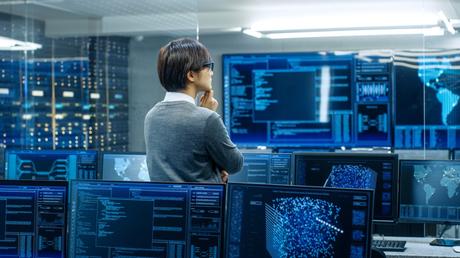
So what does the growth of artificial intelligence and machine learning mean for the future of engineering? It means new jobs that have never been thought of before. Years ago there was no need for machine learning engineers, but now it is a growing field. Engineers in the field are keeping busy creating algorithms and learning systems, building data and machine learning platforms, and creating and improving code for both new and existing platforms.
In the world of mechanical engineering, artificial intelligence means a closer, symbiotic working relationship between man and machine. It will also mean job creation as production in companies will increase and the need for competent engineers with AI know-how will also increase.
Artificial intelligence will also make engineering tasks easier. AI systems already help take the bulk of everyday mundane tasks off of the engineer’s plate. As artificial intelligence systems become smarter and better, they will move from simple to complex tasks and engineers will have more time and energy to devote to tasks that AIs will not be able to do.
Even the storage and transfer of engineering knowledge will also change. Knowledge bases will operate more efficiently and with better accuracy as their algorithms learn, making learning more targeted and consumer-oriented.
Conclusion
As the world changes and artificial intelligence becomes even more integrated into our daily lives, it is important to be able to adapt to the changes and innovations that AI will inevitably bring to our workforce and into our lives. We need to continually learn and evolve with machines. Artificial intelligence is beneficial to businesses, customer service, the medical field, manufacturers, marketing, even social media. The amount of data we consume daily has been streamlined to cater to our interests. The medical field has developed new and better ways to address the needs of patients. Car manufacturers have devised a way to make driving safer and autonomous. Astronauts’ lives have gotten easier during their space exploration. All these are thanks to artificial intelligence and the scientists and engineers who make it all possible.
